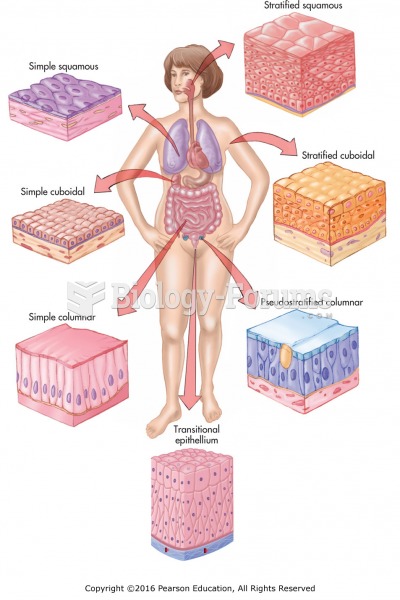Answer to Question 1A land turtle will need a vivarium that is at least six times, in length and width, the length of the turtle's shell.
If rocks, logs, or decorations are to be added, the vivarium should be larger. If additional turtles are going to
be added to the vivarium, figure one-third more area needed for each additional turtle.
For aquatic turtles, an area five times as long and three times as wide as the turtle's shell should be provided.
Platforms made from wood or rocks should be provided so that the turtles can climb out of the water
and bask in the rays of a heat lamp. The size of the basking area will influence the overall size of the viviarium.
The depth of the water in the vivarium should be at least one foot. The height of the sides should be sufficient
to prevent the turtle from climbing out and escaping.
The substratum in the bottom of a land turtle's vivarium can be four to six inches of soil, sand, dry leaves,
or wood mulch. These materials allow for normal digging and hiding but are difficult to clean. Lining the cage
with newspaper and then providing a plastic hide box with organic bedding solves this problem. Misting the
hide box and materials with water also provides an area of increased humidity. Depending on the species,
branches, large rocks, and logs can be added. All land turtles should be provided with a shallow container of
water. The depth of the water in the container should never be more than the height of the front edge of the
turtle's carapace. The sides of the container should be gradually sloping, so the turtle can easily get out of the
water. No material or substratum is needed in the bottom of an aquatic turtle habitat.
Small lizards, such as geckos and anoles, that are five to six inches long can be kept in vivariums a minimum
of 12 inches wide, 12 inches long, and 16 inches high. A vivarium of this size can keep one male and
two females. The vivarium should also contain rocks, plants, tree limbs, or branches to give these active little
lizards things to climb on. Some species are not social and should be housed individually except during
breeding.
A ratio of length to width to height of 1:2:2 is sometimes used in determining the size of a vivarium for
active tree- or wall-climbing lizards. In planning for terrestrial lizards, a ratio of 2:1:1 is sometimes used.
Larger geckos and more active lizards will need a larger vivarium. A vivarium 60 inches long, 24 inches wide,
and 24 inches high may be needed to keep several spiny lizards. Common iguanas will need a vivarium at
least as large as 80 by 60 by 60 inches for one male and two females. Smaller vivariums would be needed if
only one animal is to be housed.
The most commonly used material for vivariums is glass aquariums. These should be fitted with an
appropriate cover to keep the animals from escaping. Plexiglas can also be used to construct vivariums.
Holes can be drilled in Plexiglas to provide ventilation. Glass and Plexiglas are definitely needed for aquatic,
semiaquatic, or rainforest habitats. Wood and wire mesh screen can be used to construct cages for dry
habitats. Wood will deteriorate quickly if used for wet habitats.
Water in aquatic and semiaquatic vivariums should be changed every three to seven days to prevent the
buildup of bacteria and harmful wastes. An alternative to changing the water is to install a circulation pump
and filter system along with an aeration system to help maintain water quality.
Because reptiles are unable to generate their own body heat, a heat source must be provided. An
incandescent light with a reflector shield will make a good light and heat source. The wattage of the bulb used
will depend on the amount of heat needed and the distance the light is placed above the vivarium.
A thermometer and thermostat in the vivarium are important so that the temperature can be maintained
in the preferred optimal temperature zone (POTZ) for the species. The temperature under the heat lamp may
need to be as high as 100F. To duplicate normal habitats, a timer may need to be added to a second heat
lamp so that the lamp will be turned off at night, thereby maintaining higher temperatures during the day and
cooler temperatures at night. Relative humidity should be maintained in the normal range for the species and
can be monitored with a hygrometer.
Sunlight is important not only as a heat source but because the skin absorbs the ultraviolet (UR) rays that
are needed in calcium metabolism, formation of pigment, and vitamin D synthesis. Inadequate lighting can
lead to metabolic bone disease and other ailments. A full-spectrum UVB fluorescent lamp is recommended.
A UVB heat lamp will provide the needed UV rays as well as heat. The lamps should not be placed on glass
because the glass will filter out the UV rays. These lamps emit full-spectrum light for a limited time and
should be replaced every four months. In warm months, house the reptile outside during the day. Outside
caging should be predator-proof and out of full sun.
Vivariums for aquatic and semiaquatic species need a method of heating the water, which should be maintained
at a temperature mimicking the species' natural environment. Aquarium heaters can be used. To prevent
reptiles from moving or damaging the heating unit, it should be placed between a couple of clay bricks.
If additional heating is needed, a heating cable or a heating mat can be used. Heating cables can be run
through the substratum in the bottom of the vivarium. A piece of wire mesh screen placed over the cables will
prevent reptiles from digging up the cables and possibly causing burns. Placing heat cables or mats under the
bottom of the cage and varying the thickness of the substrate can increase safety. Heat rocks are not recommended
because many animals have been burned by them.
Reptiles that originate in tropical rainforests may need to have sprinkler or misting systems to duplicate
the daily rainfall of their original habitats; these will need to be on a timer. Heat and humidity requirements
for this type of habitat will differ considerably from other types of habitats.
Answer to Question 2(a) Terrestrial habitats for reptiles that live on land
(b) Semiaquatic habitats for reptiles that live on land or in trees but spend part of their time in the water
(c) Aquatic habitats for reptiles that live primarily in the water
(d) Arboreal habitats for reptiles that live in trees







